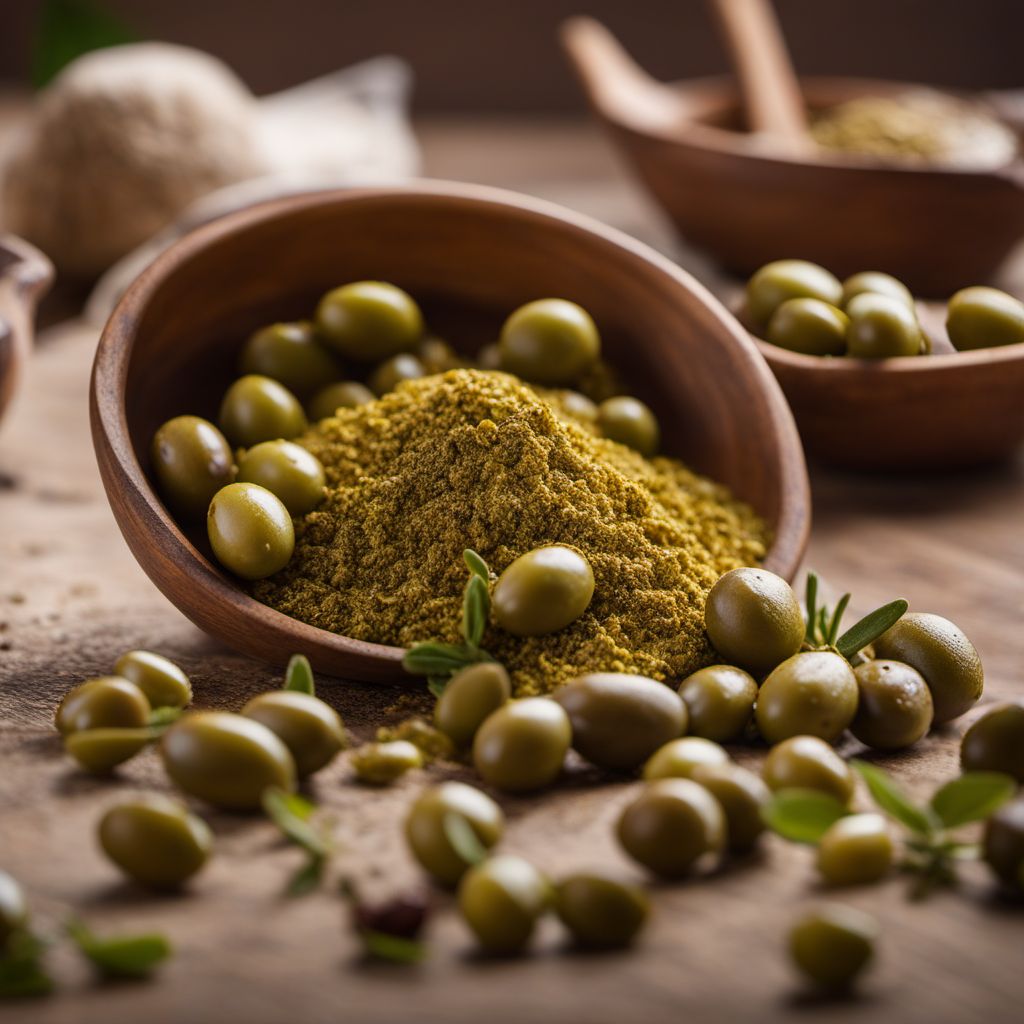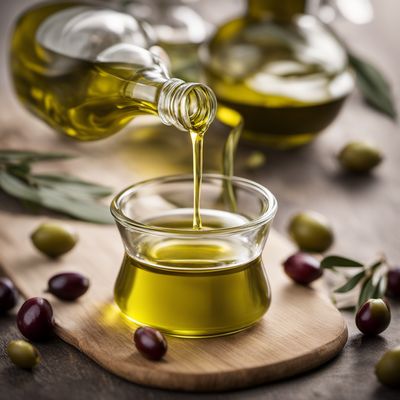
Ingredient
Olive pomace oil
The Versatile Elixir: Unveiling the Wonders of Olive Pomace Oil
Olive pomace oil is a golden-hued oil with a mild flavor and a smooth, velvety texture. It is extracted from the pomace, which consists of the leftover olive skins, pulp, and pits after the initial pressing of olives for extra virgin olive oil. This oil undergoes a refining process to remove impurities, resulting in a neutral taste and a higher smoke point compared to extra virgin olive oil. Its light and delicate nature make it an excellent choice for sautéing, frying, and baking, as it imparts a subtle olive flavor without overpowering the dish. Its smooth texture also makes it ideal for use in salad dressings, marinades, and dips.
Origins and history
Olive pomace oil has its roots in the Mediterranean region, where olive cultivation has been practiced for thousands of years. Historically, olive pomace oil was produced as a way to utilize the byproducts of olive oil production, ensuring minimal waste. Over time, it gained popularity as a cost-effective alternative to extra virgin olive oil, finding its place in both traditional Mediterranean cuisine and international culinary practices.
Nutritional information
Olive pomace oil is a rich source of monounsaturated fats, which are known to promote heart health by reducing bad cholesterol levels. It also contains vitamin E, an antioxidant that helps protect cells from damage. With approximately 120 calories per tablespoon, it is important to use olive pomace oil in moderation as part of a balanced diet.
How to select
When selecting olive pomace oil, look for a reputable brand that ensures quality and authenticity. Check for clear labeling indicating that the oil is 100% olive pomace oil. Opt for bottles that are dark or opaque to protect the oil from light exposure, which can degrade its quality. Additionally, consider the oil's color, as a vibrant golden hue is indicative of freshness.
Storage recommendations
To maintain the freshness and quality of olive pomace oil, store it in a cool, dark place away from direct sunlight. Ensure the bottle is tightly sealed to prevent oxidation. Proper storage can help extend the shelf life of the oil and preserve its flavor.
How to produce
Olive pomace oil production is a complex process best left to professionals. However, if you are interested in producing your own olive oil, consider growing olive trees in a suitable climate and harvesting the olives when they are fully ripe. The olives can then be pressed to extract the oil, and the resulting pomace can be further processed to obtain olive pomace oil.
Preparation tips
Olive pomace oil is a versatile ingredient that can be used for various cooking techniques. It is particularly well-suited for sautéing and frying due to its high smoke point. When using it in salad dressings or marinades, combine it with other flavorful ingredients to enhance its taste. Remember to use it in moderation, as its mild flavor can easily be overwhelmed by stronger ingredients.
Culinary uses
Olive pomace oil is commonly used in Mediterranean cuisine, where it adds a subtle olive flavor to dishes such as pasta, roasted vegetables, and grilled meats. It is also a popular choice for deep-frying, as its high smoke point allows for crispy and golden results. Additionally, it can be used as a base for homemade mayonnaise or as a finishing oil drizzled over soups, stews, or bruschetta.
Availability
Olive pomace oil is commonly available in regions with a strong tradition of olive oil production, such as the Mediterranean countries (Spain, Italy, Greece) and other countries with a significant olive industry.

